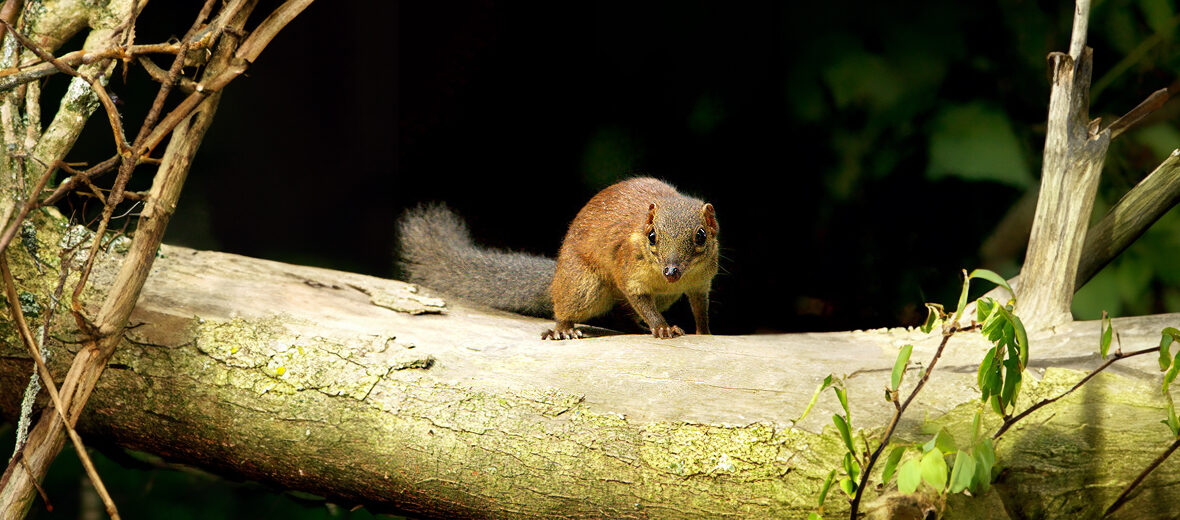
The common treeshrew, aka tree shrew or banxring, despite their namesake are not true shrews. They are native to the tropical forests of Indonesia, Malaysia, and Thailand. They face the threats of habitat loss and destruction at the hands of farming, ranching, logging; hunting; and trapping. However, they are abundant enough to be listed as Least Concern by the IUCN. Their numbers are decreasing though.
First the Stats…
Scientific name: Tupaia glis
Weight: Up to 4.7 ounces
Length: Up to 8.3 inches, plus up to a 7.87 inch tail
Lifespan: Up to 12.5 years
Now on to the Facts!
1.) Even though their habitats are being destroyed, these critters do show some adaptability to habitat loss.
2.) There are 2 subspecies: Tupaia glis longipes and Tupaia glis salatana.
3.) They prefer to dwell in primary dipterocarp forests (lowland tropical flowering trees), secondary forests, fruit orchards, plantations, and trees close to houses.
4.) Common treeshrews can be found at elevations of up to 3,600 feet in the Kelabit Highlands of Borneo.
5.) Fruits, seeds, leaves, and insects, primarily ants and spiders are all on the menu. Lizards are also sometimes feasted upon.
But wait, there’s more on the common treeshrew!
6.) Territories are denoted via chest and anogenital (anus & genitals) scent marking via a secretion from glands on their chest and scrotum.
7.) Common treeshrews are diurnal (active during the day).
Did you know…?
They can jump up to 2 feet from tree to tree.
8.) Males patrol a territory of up to 94,820 square feet, whereas juveniles maintain an area of up to 81,020 square feet, and females control an area of up to 78,090 square feet.
9.) Territorial same sex chases are frequent.
10.) Females are in oestrus (heat) for up to 39 days, and the gestation (pregnancy) lasts up to 52 days.
But wait, there’s still more on the common treeshrew!
11.) The female will produce up to 3 offspring that weigh just .42 ounce.
12.) Suckling takes place every other day and the mothers neglect their young for as long as possible.
Did you know…?
These critters have a larger brain to body ratio than any other mammal, including humans.
13.) Females would be incapable of recognizing her own offspring if she didn’t mark them via scent glands found in her sternum and abdomen.
14.) Reproduction coincides with the availability of insects after the dry season.
15.) Due to their close relationship to primates, and their well-developed senses of vision and hearing, these critters are, unfortunately, often used as models for testing human diseases.
Now a Short Common Treeshrew Video!
This video talks about treeshrews in general.
Be sure to share & comment below! Also, check out the Critter Science YouTube channel. Videos added regularly!
Want to suggest a critter for me to write about? Let me know here.
Some source material acquired from: Wikipedia & IUCN
Photo credit: Ecology Asia




